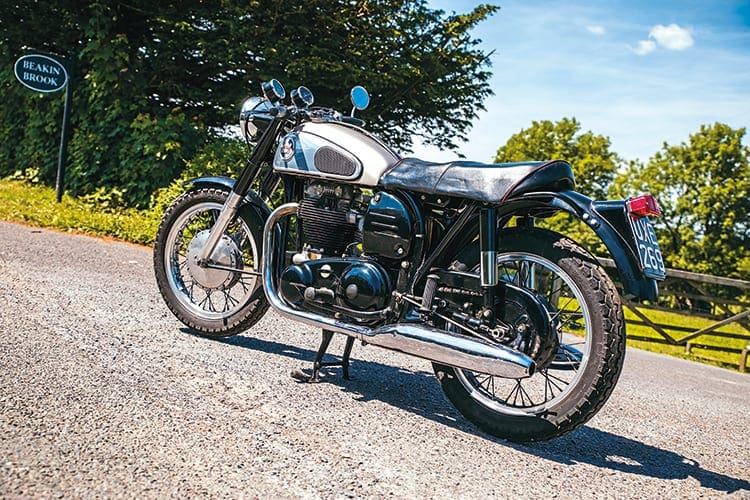The Norton Dominator. If you are going to call your motorcycle the Dominator, it had better live up to the name. For designer Bert Hopwood the Dominator was intended to do just that.

Enjoy more Classic Bike Guide reading in the monthly magazine.
Click here to subscribe & save.
For more content, why don’t you like our Facebook page here, or follow us on Instagram for a snippet of our striking pictures!
Designed at first as a 500, the Dominator appeared in 1949 as the Model 7, with a rigid-framed 600 appearing shortly afterwards for the Australian market. The 600cc Model 77 ‘Smooth Look’ twin arrived in 1955, using Norton’s purposeful but unspectacular cradle frame. 1952 also saw the arrival of the first Norton twins to use the Wideline Featherbed frame, using commercial quality tubing rather than the racing quality Reynolds 531 used on the racing Manx Nortons. This started with the 500cc Model 88, which was available only for the export market at first, becoming a home market model in 1953. It was joined in 1956 by the 597cc Dominator 99 in the same frame.
The Dominator 99 had an alloy cylinder head borrowed from the sportier version of the 88 and full width hubs. The first 99 had a painted tank with chrome panels rather than an all chromed and painted tank used on earlier models. Early Dominators had magneto ignition and a dynamo, with these items replaced in 1958 with a crankshaft-mounted alternator while Norton used a distributor that incorporated points and a mechanical advance/retard using a single coil mounted under the tank in place of the magneto until 1962, when Norton reverted to a magneto until 1966. The engines looked the same to the casual observer. The alloy head and pushrods and the replacement of the chain-driven magneto quietened the engine’s mechanical thrashing about considerably, while the distributor and coil arrangement made starting a lot easier when the set-up was new.
Want to read on? Then subscribe to Classic Bike Guide and read our magazines online!
For more content, why don’t you like our Facebook page here, or follow us on Instagram for a snippet of our striking pictures!
Advert
 Enjoy more Classic Bike Guide reading in the monthly magazine. Click here to subscribe.
Enjoy more Classic Bike Guide reading in the monthly magazine. Click here to subscribe.


